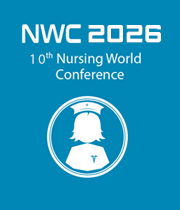Title : Combating alarm fatigue by enhancing telemetry management
Abstract:
Telemetry monitoring is a vital and indispensable tool in modern patient care, providing continuous cardiac and physiological data that enables clinicians to detect early signs of patient deterioration and intervene promptly. However, in recent years, excessive telemetry alarms and prolonged monitoring durations have emerged as significant challenges in clinical settings. These issues contribute not only to alarm fatigue among healthcare providers leading to desensitization and potential missed critical events but also to increased healthcare costs and patient discomfort due to unnecessary monitoring. This Process Improvement Plan outlines a comprehensive, multifactorial approach to revamping telemetry management with the goals of decreasing the frequency of non-actionable telemetry alarms and optimizing the length of telemetry monitoring. These efforts aim to enhance both patient safety and the efficient utilization of clinical resources. By implementing evidence-based alarm management protocols, which include setting tailored alarm thresholds based on individual patient risk profiles, conducting periodic reassessment of monitoring indications, and fostering interdisciplinary collaboration among nursing, medical, and technical staff, healthcare teams can effectively reduce the burden of unnecessary alarms. Furthermore, the application of clinical guidelines to establish clear and consistent criteria for the appropriate initiation and timely discontinuation of telemetry use helps minimize the duration of monitoring without compromising patient outcomes or safety. Early findings from the implementation of these interventions are promising; data demonstrate a significant decrease in alarm frequency, a measurable reduction in provider stress and alarm fatigue, and notable improvements in clinical workflow efficiency, all while maintaining or even enhancing patient safety standards. Ultimately, optimizing telemetry alarm management and monitoring duration not only fosters a safer and more efficient clinical environment but also supports the delivery of high-quality, patient-centered care. This initiative exemplifies a commitment to continuous quality improvement and responsible stewardship of healthcare resources. Notably, we have seen a decrease in the number of patients remaining on telemetry unnecessarily and a reduction in the number requiring telemetry from the emergency department. Our focused efforts in alarm management have clarified and improved the appropriateness of telemetry use, resulting in fewer alarms and creating a more effective healthcare setting for everyone involved. Transforming our approach to telemetry management is crucial for effectively tackling alarm fatigue. By refining these systems, we can significantly reduce overwhelming alerts, thereby improving patient care and staff efficiency.



